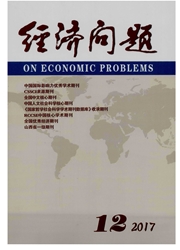

 中文摘要:
中文摘要:
我国改革开放已走过近40年的历程,取得了举世瞩目的成就,但一些非国有企业长期对其员工实行低工资的"大棒式"管理,导致其劳资关系紧张、劳资冲突频发问题成为了一个矛盾聚焦点。揭示现实中长期对员工实施"大棒式"管理的理论基础,构想新的合作共赢劳资关系理论模型,在合作共赢劳资关系理论模型下,实现对古典劳资理论的发展与应用。
 英文摘要:
英文摘要:
China has made remarkable achievements for more than thirty years since reform and opening up, but some deep - seated problems have gradually highlighted, and the non - state - owned enterprise labor relations have become the focal point of numerous contradictory among them:migrant labor shortage appeared in 2004;the slave scandal in black brick kiln in Shanxi Province in 2007 shocked the world. There were 10 continuous suicidal jumping in Foxconn factories in 2010 ;migrant workers who lived in the open under overpass frozen to death in 2012 ;recently there was beating and smashing is associated with the labor market riot in Galanz in Guangzhou. etc. transition, the main reason is that the Although the emergence of these problems non - state - owned enterprises, absorbing these migrant workers as their main human resources ,have managed them with the way of "stick style" for a long time. This paper reveals that the reality of long - term implementation of theoretical basis of "stick style" management is the defect existing in the theory of labor relations and Keynes's theory of employment based on labor relations, the Nobel Prize winner Lewis theory of agricultural labor transfer. The solution presented in this article is to build a new cooperative and win - win model of the relationship between labor and capital, to achieve the develop- ment of Keynes' s theory of labor employment, Lewis' s theory of agricultural labor transfer, Marx labor relations management theory and the scientific management theory, which was found by Taylor, the father of scientific management. Finally, based on the theory of development, many respects of countermeasure and suggestion of establishing cooperation and win -win labor relations are put forward which include solving the employment problems and realizing the rural industrialization, urbanization,informatization and agricultural modernization in China.
 同期刊论文项目
同期刊论文项目
 同项目期刊论文
同项目期刊论文
 期刊信息
期刊信息
